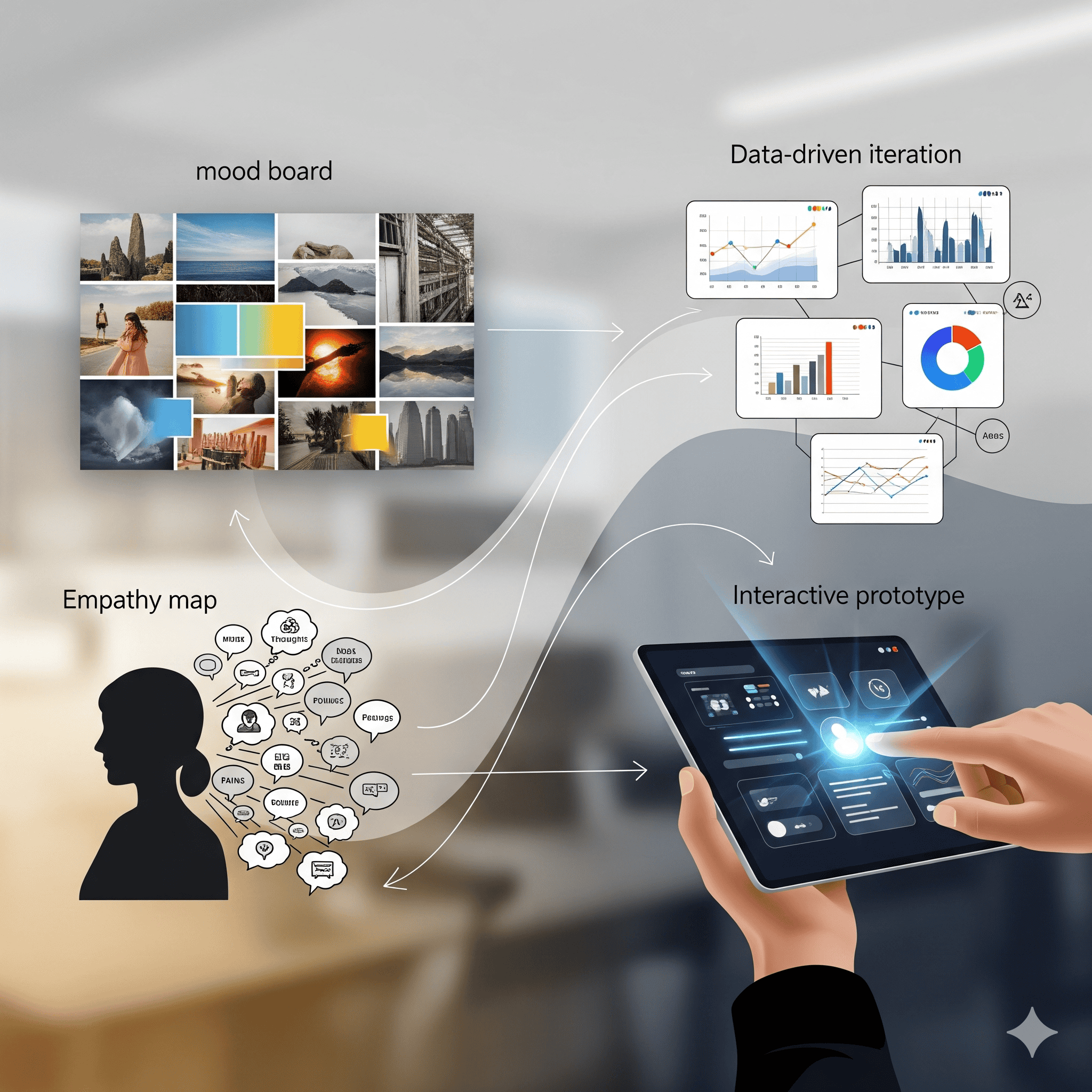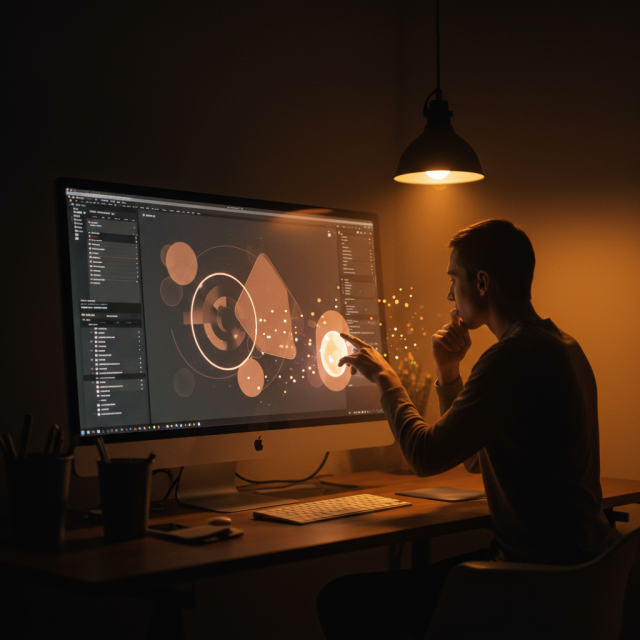In today’s visually saturated world, the ability to connect with users on an emotional level is what separates fleeting impressions from lasting bonds. Emotion-driven creative design leverages color, form, interaction, and narrative to elicit feelings—joy, trust, curiosity—that guide users toward meaningful engagement. In this post, we’ll explore the principles behind emotional design, practical techniques to evoke feeling, and strategies for applying these concepts in real-world projects. By the end, you’ll have a roadmap for crafting experiences that don’t just look good, but also resonate deeply with your audience.
1. Understanding Emotional Design
Emotional design is the practice of shaping user experiences so they trigger desired emotional responses. Rather than focusing solely on usability or aesthetics, it acknowledges the user as an emotional being whose feelings drive behavior. According to Don Norman’s three levels of emotional design—visceral, behavioral, and reflective—designers can target immediate sensory appeal, seamless functionality, and long-term meaning. Together, these layers create a holistic encounter that feels intuitive, engaging, and memorable.
2. Key Principles of Emotional Design
To harness emotion effectively, keep these guiding principles in mind:
- Empathy First: Conduct user research to map emotional journeys. What frustrations, joys, and motivations define their interaction? Empathy guides you toward visuals and interactions that feel personal and relevant.
- Clarity of Purpose: Every design element should serve an emotional goal—spark delight, build trust, or reduce anxiety. Extraneous decorations dilute impact.
- Consistency: Reinforce emotions through a unified visual language: color palettes, typography, iconography, and motion should all speak a coherent emotional tone.
- Surprise & Delight: Small, unexpected touches—micro-animations, personalized messages—create moments of joy that strengthen user loyalty.
- Accessibility: True emotional resonance is inclusive. Ensure colors, contrast, and interactions are accessible to all users, regardless of ability.
3. Techniques to Evoke Emotion
Here are actionable techniques to infuse your designs with emotional power:
- Color Theory: Leverage warm hues (reds, oranges) for energy and excitement; cool hues (blues, greens) for calm and trust. Use accent colors strategically to draw attention or convey urgency.
- Imagery & Illustration: Photographs of real people spark empathy; hand-drawn illustrations feel personal and playful. Choose styles that align with your brand personality and emotional goals.
- Motion & Micro-Interactions: Subtle transitions, hover effects, and progress animations communicate system status and reward user actions. A gentle bounce or fade-in can feel magical when timed correctly.
- Tone & Voice: Words convey emotion just as powerfully as visuals. A friendly greeting, encouraging microcopy, or a touch of humor can humanize interfaces.
Example: Instead of “Error 404”, use “Oops! We can’t find that page. Let’s get you back on track.” - Narrative Flow: Structure user journeys as stories—with a clear beginning (onboarding), middle (core tasks), and end (satisfaction). Guide users through emotional beats: anticipation, challenge, resolution.
4. Applying Emotional Design in Projects

Incorporating emotion requires collaboration across disciplines. Here’s a step-by-step approach:
- Workshop & Research: Gather stakeholders for empathy mapping and user interviews. Identify key emotional touchpoints in existing flows.
- Moodboards & Style Tiles: Create visual artifacts that capture the desired emotional tone—color swatches, imagery styles, type specimens. Align on mood before detailed design begins.
- Prototype with Emotion in Mind: Build interactive prototypes that showcase micro-interactions and copy tone. Test prototypes with real users to validate emotional impact.
- Iterate & Measure: Collect qualitative feedback (user interviews, sentiment analysis) and quantitative metrics (engagement rate, task completion time). Iterate designs to amplify positive emotions and reduce friction.
- Launch & Nurture: After launch, monitor social sentiment and support tickets for emotional signals. Continue refining based on user stories and evolving needs.
5. Tools and Resources
A well-equipped toolkit can streamline the emotional design process:
- Figma / Sketch: Rapid UI prototyping with built-in animation plugins like Figmotion or Overflow for flow storytelling.
- Adobe XD: Voice triggers and auto-animate features for immersive prototypes.
- UserTesting / Lookback: Record real user reactions to emotional cues in your designs.
- Coolors / Adobe Color: Generate emotional color palettes based on psychology and accessibility guidelines.
- Dribbble / Behance: Find inspiration and case studies highlighting emotional design in action.
6. Case Studies: Emotional Design in Action
Let’s look at two brands that nailed emotional design:
A. Duolingo’s Delightful Learning Experience
Duolingo’s mascot, Duo the owl, uses playful animations and encouraging feedback to turn language drills into a rewarding habit. The app’s bold color palette and friendly tone reduce user anxiety, making learning feel like a game rather than a chore.
B. Airbnb’s Trust-Building Interface
Airbnb leverages high-quality photographs, comprehensive host profiles, and subtle progress indicators to foster trust. Personalized messages & timely reminders guide guests and hosts through each step, creating a warm, community-driven experience.
Conclusion
Emotion-driven creative design transforms static interfaces into living experiences that resonate on a human level. By understanding the science of emotion, applying proven techniques, and iterating with real user feedback, you can craft designs that not only meet functional needs but also spark genuine connections. Whether you’re redesigning a website, developing a mobile app, or creating a brand identity, let emotion be your compass—because when users feel understood, they stay, engage, and return.
Learn more about: Neuroaesthetics in Creative Design: Harnessing Brain Science to Boost User Engagement









